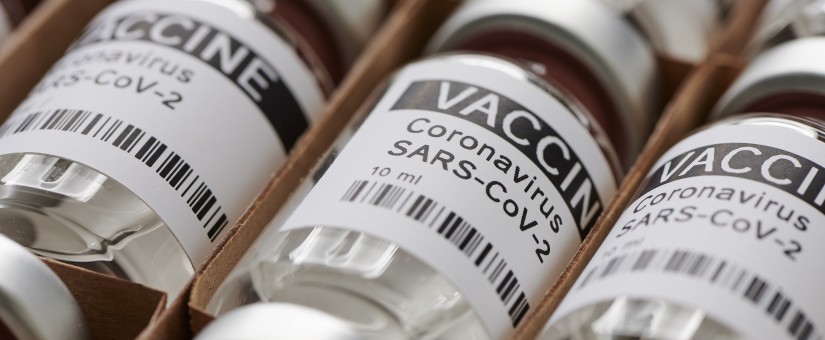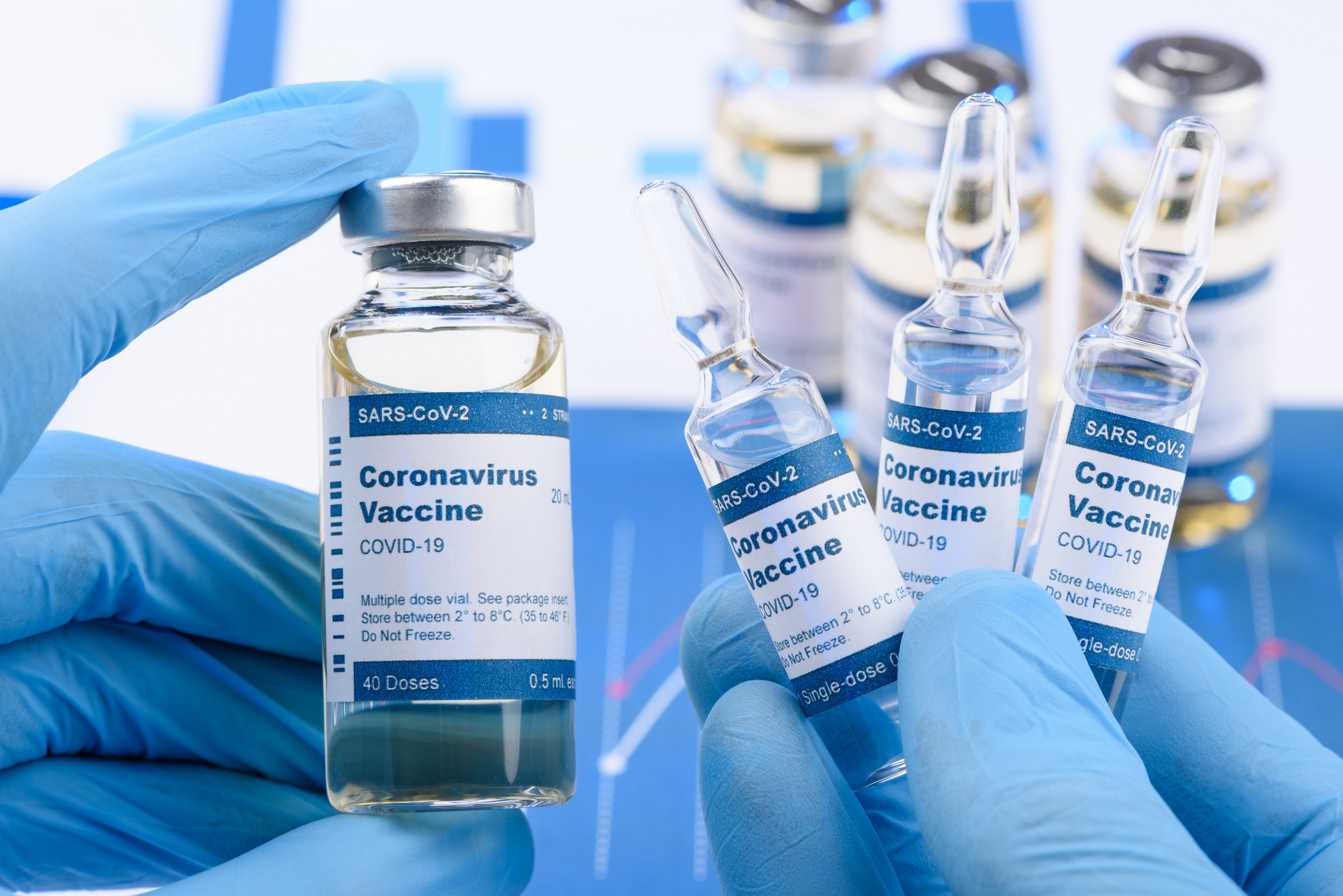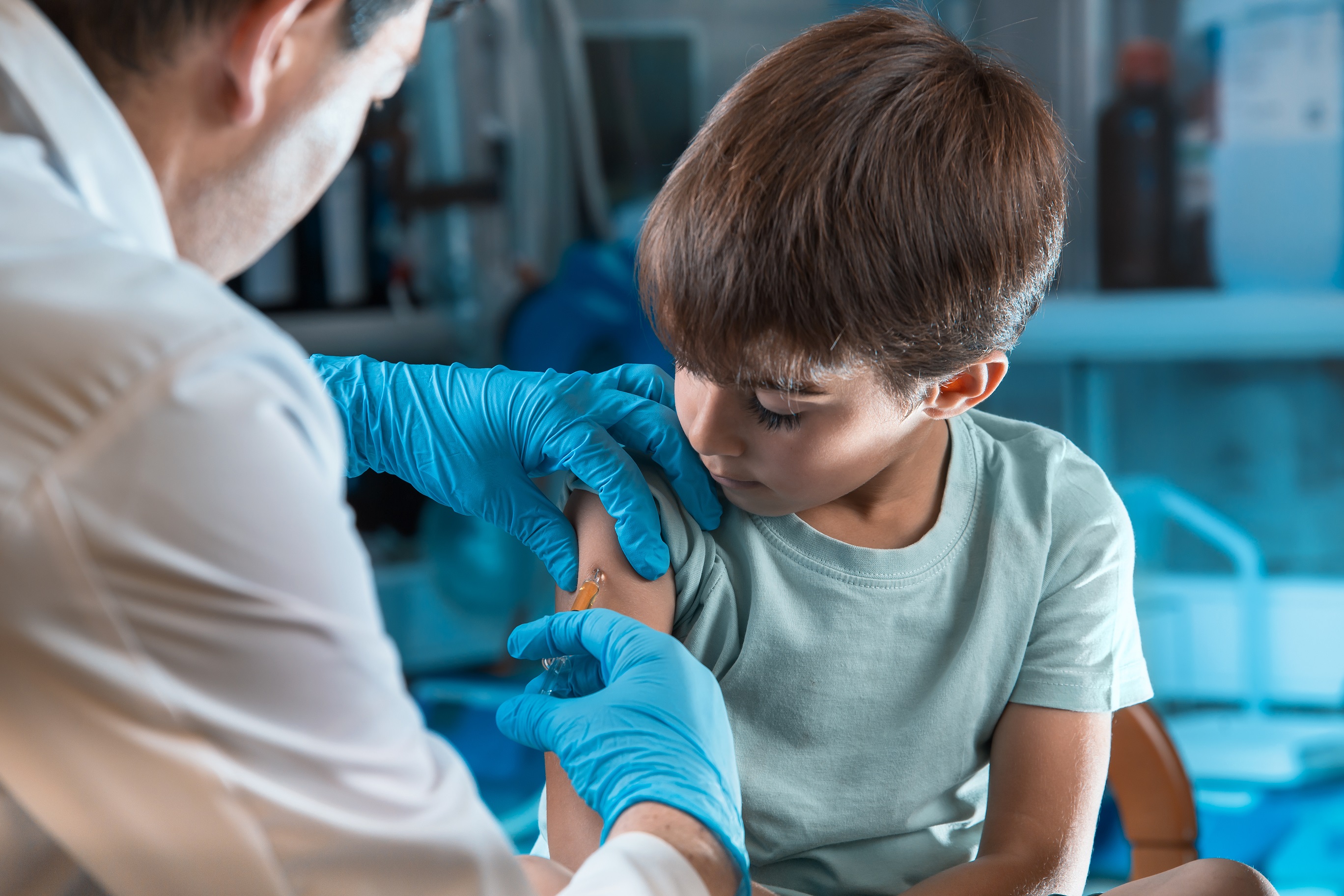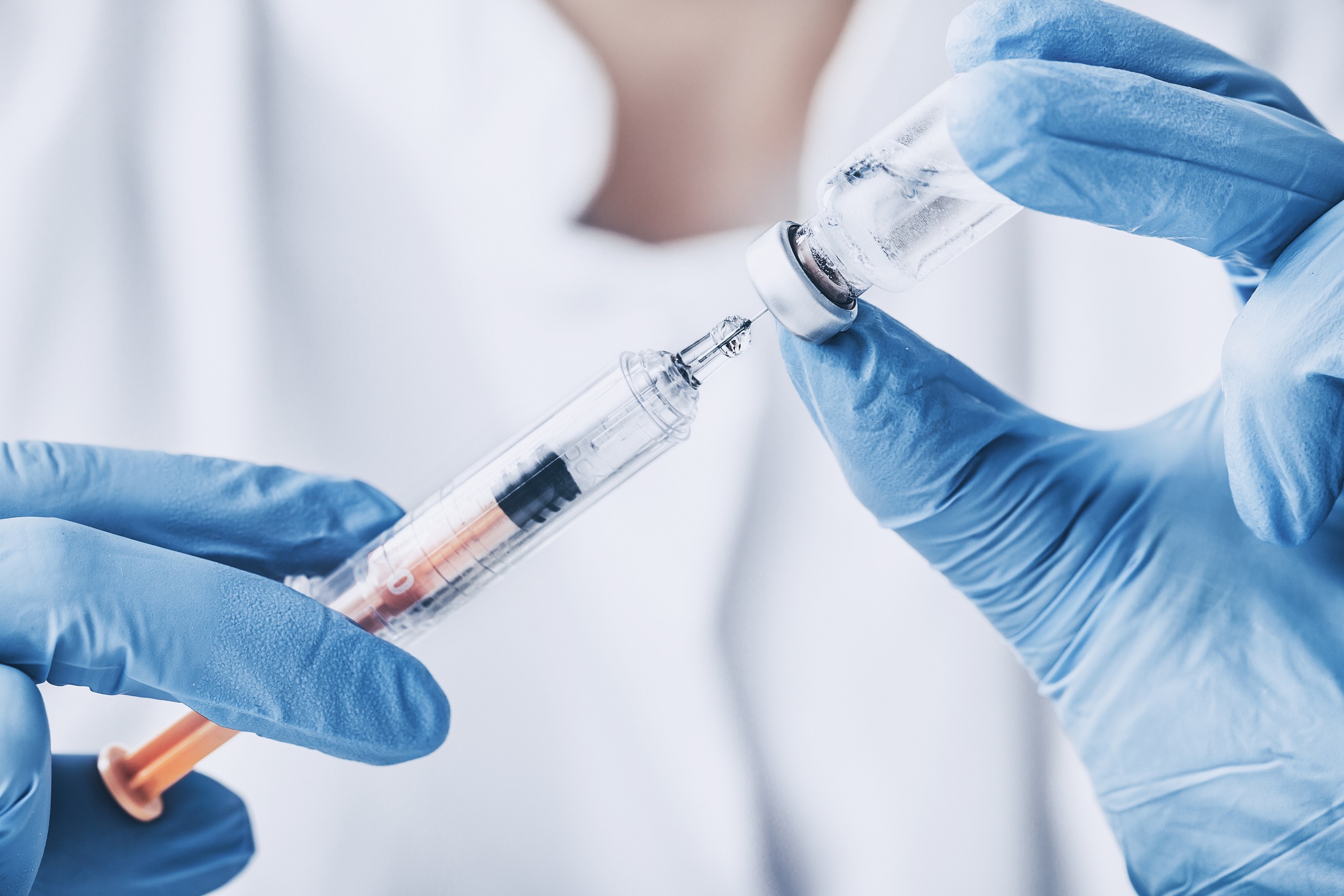
Vaccines against COVID-19
- 10 December 2020
- application, AstraZeneca, benefits, BioNTech, BNT162b2, ChAdOx1-SARS-CoV-2, CHMP, CMA, conditional marketing authorisation, COVID-19, COVID-19 Janssen, COVID-19 Vaccine (inactivated adjuvanted), COVID-19 Vaccine Janssen, CVST, DIC, EC, EEA, EMA, EU, FDA, Gam-COVID-Vac, Gamaleya National Centre of Epidemiology and Microbiology, Janssen-Cilag International N.V., Jcovden, MHRA, Moderna Biotech Spain S.L., mRNA, mRNA-1273, Novavax CZ a.s., Nuvaxovid, Oxford University, Pfizer, R-Pharm Germany GmbH, risks, rolling review, Russia, Sanofi Pasteur, SARS-Cov-2, Spikevax, Sputnik V, vaccine, Valneva, Vaxzevria, VidPrevtyn Beta,

Comirnaty (BNT162b2) (BioNTech and Pfizer)
Spikevax (mRNA-1273) (Moderna Biotech Spain, S.L.)
Vaxzevria (AstraZeneca/Oxford University)
Jcovden (COVID-19 Vaccine Janssen) (Janssen-Cilag International N.V.)
Nuvaxovid (Novavax CZ, a.s.)
COVID-19 Vaccine (inactivated, adjuvanted) (Valneva)
VidPrevtyn Beta (Sanofi Pasteur)
Sputnik V (Gam-COVID-Vac) (Gamaleya National Centre of Epidemiology and Microbiology, Russia)

Comirnaty (BNT162b2)
BioNTech and Pfizer
- Authorised
Conditional marketing authorisation (CMA)
Date of issue: 2020-12-21
Marketing authorisation (MA)
Date of issue: 2022-10-10
EXTENSION OF INDICATION
Update [25/11/2021]
EMA’s human medicines committee (CHMP) has recommended granting an extension of indication for the COVID-19 vaccine Comirnaty to include use in children aged 5 to 11. The vaccine, developed by BioNTech and Pfizer, is already approved for use in adults and children aged 12 and above.

In children from 5 to 11 years of age, the dose of Comirnaty will be lower than that used in people aged 12 and above (10 µg compared with 30 µg). As in the older age group, it is given as two injections in the muscles of the upper arm, three weeks apart.
The studies in children were carried out in accordance with Comirnaty’s paediatric investigation plan (PIP), which was agreed by EMA’s Paediatric Committee (PDCO). Clinical trial data submitted by the company in the application for the paediatric extension of indication will be published on the Agency’s clinical data website in due course.
A main study in children aged 5 to 11 showed that the immune response to Comirnaty given at a lower dose (10 µg) in this age group was comparable to that seen with the higher dose (30 µg) in 16- to 25-year-olds (as measured by the level of antibodies against SARS-CoV-2). The efficacy of Comirnaty was calculated in almost 2,000 children from 5 to 11 years of age who had no sign of previous infection. These children received either the vaccine or a placebo (a dummy injection). Of the 1,305 children receiving the vaccine, three developed COVID-19 compared with 16 out of the 663 children who received placebo. This means that, in this study, the vaccine was 90.7% effective at preventing symptomatic COVID-19 (although the true rate could be between 67.7% and 98.3%).
The most common side effects in children aged 5 to 11 are similar to those in people aged 12 and above. They include pain at the injection site, tiredness, headache, redness and swelling at the site of injection, muscle pain and chills. These effects are usually mild or moderate and improve within a few days of vaccination.
The CHMP therefore concluded that the benefits of Comirnaty in children aged 5 to 11 outweigh the risks, particularly in those with conditions that increase the risk of severe COVID-19.
The safety and efficacy of the vaccine in both children and adults will continue to be monitored closely as it is used in vaccination campaigns in EU Member States through the EU pharmacovigilance system and ongoing and additional studies conducted by the company and by European authorities.
The CHMP will now send its recommendation to the European Commission, which will issue a final decision.
Update [28/05/2021]
EMA’s human medicines committee (CHMP) has recommended granting an extension of indication for the COVID-19 vaccine Comirnaty to include use in children aged 12 to 15. The vaccine is already approved for use in adults and adolescents aged 16 and above.

The use of the Comirnaty vaccine in children from 12 to 15 will be the same as it is in people aged 16 and above. It is given as two injections in the muscles of the upper arm, given three weeks apart.
The effects of Comirnaty in children were investigated in 2,260 children aged 12 to 15 years. This study was carried out in accordance with Comirnaty’s paediatric investigation plan (PIP), which was agreed by EMA’s Paediatric Committee (PDCO).
The trial showed that the immune response to Comirnaty in this group was comparable to the immune response in the 16 to 25 age group (as measured by the level of antibodies against SARS-CoV-2). The efficacy of Comirnaty was calculated in close to 2,000 children from 12 to 15 years of age who had no sign of previous infection. These received either the vaccine or a placebo (a dummy injection), without knowing which one they were given. Of the 1,005 children receiving the vaccine, none developed COVID-19 compared to 16 children out of the 978 who received the dummy injection. This means that, in this study, the vaccine was 100% effective at preventing COVID-19 (although the true rate could be between 75% and 100%).
The most common side effects in children aged 12 to 15 are similar to those in people aged 16 and above. They include pain at the injection site, tiredness, headache, muscle and joint pain, chills and fever. These effects are usually mild or moderate and improve within a few days from the vaccination.
The CHMP concluded that the benefits of Comirnaty in this age group outweigh the risks.
The CHMP noted that due to the limited number of children included in the study, the trial could not have detected rare side effects. The committee also noted that EMA’s safety committee PRAC is currently assessing very rare cases of myocarditis (inflammation of the heart muscle) and pericarditis (inflammation of the membrane around the heart) that occurred after vaccination with Comirnaty, mainly in people under 30 years of age. Currently there is no indication that these cases are due to the vaccine and EMA is closely monitoring this issue.
Despite this uncertainty, the CHMP considered that benefits of Comirnaty in children aged 12 to 15 outweigh the risks, in particular in children with conditions that increase the risk of severe COVID-19.
The safety and efficacy of the vaccine in both children and adults will continue to be monitored closely as it is used in vaccination campaigns across the Member States, through the EU pharmacovigilance system and ongoing and additional studies by the company and by European authorities.
SAFETY
Update [18/05/2021]
Swelling of the face in people who have had a dermal filler injection will be added to the product information of Comirnaty as a side effect.
Case reports of inflammation of the heart muscle and membrane will be further assessed.
Comirnaty is effective in preventing COVID-19.
Update [15/04/2021]
The latest safety data for this vaccine are in line with the known benefit-risk profile.
The assessment identified extensive swelling of the vaccinated limb, usually the upper arm, as a new side effect of Comirnaty. Although such swelling may appear severe to the vaccinated person, this condition usually recovers by itself within a couple of days after vaccination. The frequency of this side effect is being assessed further. The product information will be updated accordingly.
PRAC started an assessment of some reports of localised swelling after vaccination with Comirnaty in people with a history of injections with dermal fillers (gel-like substances injected under the skin). PRAC requested the marketing authorisation holder to review all cases and the scientific literature for further assessment by the committee.
The frequency of the recently identified side effects diarrhoea and vomiting have now been estimated as very common (i.e. occurring in more than 1 in 10 vaccinated persons) and common (i.e. occurring in more than 1 in 100 vaccinated persons), respectively. The product information of Comirnaty will be updated accordingly.
The benefits of Comirnaty in preventing COVID-19 continue to outweigh the risks, and there are no recommended changes regarding the use of this vaccine.
Update [05/03/2021]
The latest safety data for this vaccine are in line with the known benefit-risk profile; after assessing new safety data, PRAC concluded that the benefit-risk balance of Comirnaty remains unchanged.
The assessment identified diarrhoea and vomiting after vaccination as new side effects of Comirnaty. The frequency of these side effects and the extent to which they occur are being assessed further. The product information will be updated accordingly.
The benefits of Comirnaty in preventing COVID-19 continue to outweigh any risks, and there are no recommended changes regarding the use of this vaccine.
Update [29/01/2021]
The first safety update on a COVID-19 vaccine — Comirnaty concludes that safety data collected on Comirnaty use in vaccination campaigns is consistent with the known safety profile of the vaccine, and no new side effects were identified. The safety update reflects data collected and assessed since Comirnaty’s authorisation, including data from EudraVigilance (the EU’s centralised database of suspected side effects) and data received from other sources, including the company’s monthly safety report required for COVID-19 vaccines.
The benefits of Comirnaty in preventing COVID-19 continue to outweigh any risks, and there are no recommended changes regarding the use the vaccine.
EFFICACY
A very large clinical trial showed that Comirnaty was effective at preventing COVID‑19 in people from 16 years of age.
The vaccine demonstrated a 95% efficacy in the clinical trial. The trial also showed around 95% efficacy in the participants at risk of severe COVID-19, including those with asthma, chronic lung disease, diabetes, high blood pressure or a body mass index ≥ 30 kg/m2. The high efficacy was maintained across genders, racial and ethnic groups.
Update [17/12/2020]
EMA’s human medicines committee (CHMP) and its experts have been working intensively over the past weeks to evaluate data submitted by BioNTech and Pfizer in the context of the conditional marketing authorisation (CMA) application for BNT162b2, a COVID 19 mRNA vaccine.
The rate of progress is reliant on a robust and complete assessment of the quality, safety and efficacy and is determined by availability of additional information from the company to respond to questions raised during the evaluation.
Following receipt of additional data requested by the CHMP from the company and pending the outcome of its evaluation, an exceptional meeting of the CHMP has now been scheduled for 21 December to conclude if possible. The meeting planned for 29 December will be maintained if needed.
EMA has received an application for conditional marketing authorisation (CMA) for BNT162b2, a COVID‑19 mRNA vaccine developed by BioNTech and Pfizer. The assessment of BNT162b2 will proceed under an accelerated timeline. An opinion on the marketing authorisation could be issued within weeks, depending on whether the data submitted are sufficiently robust and complete to show the quality, safety and effectiveness of the vaccine.
Such a short timeframe is only possible because EMA has already reviewed some data on the vaccine during a rolling review. During this phase, EMA assessed data on the vaccine’s quality (such as information about its ingredients and the way it is produced) as well as results from laboratory studies. EMA also looked at results on the vaccine’s effectiveness and initial safety data emerging from a large-scale clinical trial as they became available.
EMA will now assess the data submitted as part of the formal application for conditional marketing authorisation. The Agency and its scientific committees will continue working on the assessment over the Christmas period. If the data submitted are robust enough to conclude on the quality, safety and effectiveness of the vaccine, EMA’s scientific committee for human medicines (CHMP) will conclude its assessment during an extraordinary meeting scheduled for 29 December at the latest. These timelines are based on the type of data assessed so far in the context of the rolling review and may be subject to change as evaluation proceeds. EMA will communicate on the outcome of its assessment accordingly.
If EMA concludes that the benefits of the vaccine outweigh its risks in protecting against COVID‑19, it will recommend granting a conditional marketing authorisation. The European Commission will then fast-track its decision-making process with a view to granting a conditional marketing authorisation valid in all EU and EEA Member States within days.
- Approved
Date of issue: 2021-08-23
- Authorised
Temporary Authorisation under Regulation 174
Date of issue: 2020-12-02

Spikevax (mRNA-1273)
Moderna Biotech Spain, S.L.
- Authorised
Conditional marketing authorisation (CMA)
Date of issue: 2021-01-06
Marketing authorisation (MA)
Date of issue: 2022-10-03
SAFETY
Update [18/05/2021]
Diarrhoea and delayed injection site reactions will be added as side effects to the product information.
Case reports of inflammation of the heart muscle and membrane will be further assessed.
COVID-19 Vaccine Moderna is effective in preventing COVID-19.
Update [15/04/2021]
The latest safety data for this vaccine are in line with the known benefit-risk profile.
The benefits of COVID-19 Vaccine Moderna in preventing COVID-19 continue to outweigh the risks, and there are no recommended changes regarding the use of this vaccine.
Update [05/03/2021]
The latest safety data for this vaccine are in line with the known benefit-risk profile; after assessing new safety data, PRAC concluded that the benefit-risk balance of COVID-19 Vaccine Moderna remains unchanged.
The benefits of COVID-19 Vaccine Moderna in preventing COVID-19 continue to outweigh any risks, and there are no recommended changes regarding the use of this vaccine.
Update [05/02/2021]
On 28 January 2021, PRAC discussed a review submitted by the marketing authorisation holder of reports of suspected severe allergic reaction after administration of COVID-19 Vaccine Moderna at a single vaccination site in the United States (US).
Anaphylaxis is a known side effect of COVID-19 Vaccine Moderna. Based on the current information, no new safety concern regarding anaphylaxis was identified for COVID-19 Vaccine Moderna.
The benefits of COVID-19 Vaccine Moderna in preventing COVID-19 continue to outweigh any risks, and there are no recommended changes regarding the use of the vaccine.
EFFICACY
A very large clinical trial showed that COVID-19 Vaccine Moderna was effective at preventing COVID-19 in people from 18 years of age.
The vaccine demonstrated a 94.1% efficacy in the trial. The trial also showed 90.9% efficacy in participants at risk of severe COVID-19, including those with chronic lung disease, heart disease, obesity, liver disease, diabetes or HIV infection. The high efficacy was also maintained across genders, racial and ethnic groups.
EMA has received an application for conditional marketing authorisation (CMA) for a COVID-19 mRNA vaccine by Moderna Biotech Spain, S.L. The assessment of the vaccine known as Moderna Covid-19 vaccine (also referred to as mRNA1273) will proceed under an accelerated timeline. An opinion on the marketing authorisation could be issued within weeks, depending on whether the data submitted are sufficiently robust and complete to show the quality, safety and effectiveness of the vaccine.
Such a short timeframe is only possible because EMA has already reviewed some data on the vaccine during a rolling review. During this phase, EMA assessed data from laboratory studies and also started assessing data on immunogenicity (how well the vaccine triggers a response against the virus) and safety from an early study.
EMA will now assess the data submitted as part of the formal application for conditional marketing authorisation. The Agency and its scientific committees will continue working on the assessment over the Christmas period. If the data submitted are robust enough to conclude on the quality, safety and effectiveness of the vaccine, EMA’s scientific committee for human medicines (CHMP) will conclude its assessment during an extraordinary meeting scheduled for 12 January at the latest. These timelines are based on the type of data assessed so far in the context of the rolling review and may be subject to change as evaluation proceeds. EMA will communicate on the outcome of its assessment accordingly.
If EMA concludes that the benefits of the vaccine outweigh its risks in protecting against COVID‑19, it will recommend granting a conditional marketing authorisation. The European Commission will then fast-track its decision-making process with a view to granting a conditional marketing authorisation valid in all EU and EEA Member States within days.
- Authorized
Emergency use authorization (EUA)
Date of issue: 2020-12-18
- Authorised
Temporary Authorisation under Regulation 174
Date of issue: 2021-01-08

Vaxzevria
AstraZeneca/Oxford University
- Authorised
Conditional marketing authorisation (CMA)
Date of issue: 2021-01-29
Marketing authorisation (MA)
Date of issue: 2022-10-31
SAFETY
Update [18/05/2021]
PRAC considered the available evidence, including recent data from the marketing authorisation holder, for an ongoing procedure to further amend the product information regarding a contraindication to not vaccinate individuals with Vaxzevria who have experienced TTS following vaccination with Vaxzevria before.
In addition, individuals diagnosed with thrombocytopenia within 3 weeks after vaccination with Vaxzevria should be actively investigated for signs of thrombosis; similarly, individuals who present with thrombosis within 3 weeks of vaccination should be evaluated for thrombocytopenia.
It should be also noted that updates to the risk management plan (RMP) regarding TTS and thrombosis are currently under assessment.
PRAC assessed cases of immune thrombocytopenia reported with Vaxzevria. PRAC has requested further data from the marketing authorisation holder to continue its assessment.
PRAC is assessing cases of Guillain-Barré syndrome (GBS) reported after vaccination with Vaxzevria in the context of its regular reviews of the Monthly Summary Safety Reports (MSSRs). PRAC has requested the marketing authorisation holder to provide further detailed data, including an analysis of all the reported cases.
Vaxzevria is effective in preventing COVID-19.
Update [16/04/2021]
EMA confirms overall benefit-risk remains positive.
On 7 April 2021, EMA’s safety committee (PRAC) has concluded that unusual blood clots with low blood platelets should be listed as very rare side effects of Vaxzevria (formerly COVID-19 Vaccine AstraZeneca).
In reaching its conclusion, the committee took into consideration all currently available evidence, including the advice from an ad hoc expert group.

EMA is reminding healthcare professionals and people receiving the vaccine to remain aware of the possibility of very rare cases of blood clots combined with low levels of blood platelets occurring within 2 weeks of vaccination. So far, most of the cases reported have occurred in women under 60 years of age within 2 weeks of vaccination. Based on the currently available evidence, specific risk factors have not been confirmed.
People who have received the vaccine should seek medical assistance immediately if they develop symptoms of this combination of blood clots and low blood platelets (see below).
The PRAC noted that the blood clots occurred in veins in the brain (cerebral venous sinus thrombosis, CVST) and the abdomen (splanchnic vein thrombosis) and in arteries, together with low levels of blood platelets and sometimes bleeding.
The Committee carried out an in-depth review of 62 cases of cerebral venous sinus thrombosis and 24 cases of splanchnic vein thrombosis reported in the EU drug safety database (EudraVigilance) as of 22 March 2021, 18 of which were fatal. The cases came mainly from spontaneous reporting systems of the EEA and the UK, where around 25 million people had received the vaccine.
COVID-19 is associated with a risk of hospitalisation and death. The reported combination of blood clots and low blood platelets is very rare, and the overall benefits of the vaccine in preventing COVID-19 outweigh the risks of side effects.
EMA’s scientific assessment underpins the safe and effective use of COVID-19 vaccines. Use of the vaccine during vaccination campaigns at national level will also take into account the pandemic situation and vaccine availability in the individual Member State.
One plausible explanation for the combination of blood clots and low blood platelets is an immune response, leading to a condition similar to one seen sometimes in patients treated with heparin (heparin induced thrombocytopenia, HIT). The PRAC has requested new studies and amendments to ongoing ones to provide more information and will take any further actions necessary.
The PRAC stresses the importance of prompt specialist medical treatment. By recognising the signs of bloods clots and low blood platelets and treating them early, healthcare professionals can help those affected in their recovery and avoid complications.
Patients should seek medical assistance immediately if they have the following symptoms:
- shortness of breath;
- chest pain;
- swelling in your leg;
- persistent abdominal (belly) pain;
- neurological symptoms, including severe and persistent headaches or blurred vision;
- tiny blood spots under the skin beyond the site of injection.
Vaxzevria is one of four vaccines authorised in the EU for protecting against COVID-19. Studies show that it is effective at preventing the disease. It also reduces the risk of hospitalisation and deaths from COVID-19.
As for all vaccines, EMA will continue to monitor the vaccine’s safety and effectiveness and provide the public with the latest information.
Update [22/03/2021]
EMA’s safety committee, PRAC, concluded its preliminary review of a signal of blood clots in people vaccinated with COVID-19 Vaccine AstraZeneca at its extraordinary meeting of 18 March 2021. The Committee confirmed that:
- the benefits of the vaccine in combating the still widespread threat of COVID-19 (which itself results in clotting problems and may be fatal) continue to outweigh the risk of side effects;
- the vaccine is not associated with an increase in the overall risk of blood clots (thromboembolic events) in those who receive it;
- there is no evidence of a problem related to specific batches of the vaccine or to particular manufacturing sites;
- however, the vaccine may be associated with very rare cases of blood clots associated with thrombocytopenia, i.e. low levels of blood platelets (elements in the blood that help it to clot) with or without bleeding, including rare cases of clots in the vessels draining blood from the brain (CVST).
These are rare cases – around 20 million people in the UK and EEA had received the vaccine as of March 16 and EMA had reviewed only 7 cases of blood clots in multiple blood vessels (disseminated intravascular coagulation, DIC) and 18 cases of CVST. A causal link with the vaccine is not proven, but is possible and deserves further analysis.
The PRAC involved experts in blood disorders in its review, and worked closely with other health authorities including the UK’s MHRA which has experience with administration of this vaccine to around 11 million people. Overall the number of thromboembolic events reported after vaccination, both in studies before licensing and in reports after rollout of vaccination campaigns (469 reports, 191 of them from the EEA), was lower than that expected in the general population. This allows the PRAC to confirm that there is no increase in overall risk of blood clots. However, in younger patients there remain some concerns, related in particular to these rare cases.

The Committee was of the opinion that the vaccine’s proven efficacy in preventing hospitalisation and death from COVID-19 outweighs the extremely small likelihood of developing DIC or CVST. However, in the light of its findings, patients should be aware of the remote possibility of such syndromes, and if symptoms suggestive of clotting problems occur patients should seek immediate medical attention and inform healthcare professionals of their recent vaccination. Steps are already being taken to update the product information for the vaccine to include more information on these risks.
EMA will communicate further as appropriate.
Update [15/03/2021]
Several authorities responsible for national vaccine campaigns in EU countries have temporarily paused vaccination with COVID-19 Vaccine AstraZeneca. This is a precaution taken in the light of their national situation while EMA investigates a number of events of blood clots in people who had received the vaccine, as previously reported.
Events involving blood clots, some with unusual features such as low numbers of platelets, have occurred in a very small number of people who received the vaccine. Many thousands of people develop blood clots annually in the EU for different reasons. The number of thromboembolic events overall in vaccinated people seems not to be higher than that seen in the general population.
EMA is working closely with the company, with experts in blood disorders, and with other health authorities including the UK’s MHRA based on its experience with around 11 million administered doses of the vaccine.
EMA’s investigation has been continuing over the weekend, and rigorous analysis of all the data related to thromboembolic events will be carried out in the coming days. Experts are looking in great detail at all the available data and clinical circumstances surrounding specific cases to determine whether the vaccine might have contributed or if the event is likely to have been due to other causes. EMA’s safety committee (PRAC) will further review the information tomorrow (Tuesday) and has called an extraordinary meeting on Thursday 18 March to conclude on the information gathered and any further actions that may need to be taken. While its investigation is ongoing, EMA currently remains of the view that the benefits of the AstraZeneca vaccine in preventing COVID-19, with its associated risk of hospitalisation and death, outweigh the risks of side effects.

EMA will continue to communicate further as appropriate. In the meantime, anyone who has received the vaccine and has any concerns should contact an appropriate healthcare professional. It is important that people who suspect they may have a side effect after vaccination report this to the national medicines regulator, or to a healthcare professional who can help them do so.
Update [12/03/2021]
The Austrian national competent authority has suspended the use of a batch of COVID-19 Vaccine AstraZeneca (batch number ABV5300) after a person was diagnosed with multiple thrombosis (formation of blood clots within blood vessels) and died 10 days after vaccination, and another was hospitalised with pulmonary embolism (blockage in arteries in the lungs) after being vaccinated. The latter is now recovering. As of 9 March 2021, two other reports of thromboembolic event cases had been received for this batch.
Batch ABV5300 was delivered to 17 EU countries and comprises 1 million doses of the vaccine.
EMA is aware that the Danish Health Authority has paused its vaccination campaign with COVID-19 Vaccine AstraZeneca. This was decided as a precautionary measure while a full investigation is ongoing into reports of blood clots in people who received the vaccine, including one case in Denmark where a person died. Some other Member States have also paused vaccination with this vaccine.
There is currently no indication that vaccination has caused these conditions, which are not listed as side effects with this vaccine. The position of EMA’s safety committee PRAC is that the vaccine’s benefits continue to outweigh its risks and the vaccine can continue to be administered while investigation of cases of thromboembolic events is ongoing. PRAC is already reviewing all cases of thromboembolic events, and other conditions related to blood clots, reported post-vaccination with COVID-19 Vaccine AstraZeneca. The number of thromboembolic events in vaccinated people is no higher than the number seen in the general population.
EMA will further communicate as the assessment progresses.
EFFICACY
Combined results from 4 clinical trials in the United Kingdom, Brazil and South Africa showed that COVID-19 Vaccine AstraZeneca was safe and effective at preventing COVID-19 in people from 18 years of age.
The vaccine demonstrated around a 60% efficacy in the clinical trials. Most of the participants in these studies were between 18 and 55 years old. There are not yet enough results in older participants (over 55 years old) to provide a figure for how well the vaccine will work in this group. However, protection is expected, given that an immune response is seen in this age group and based on experience with other vaccines; as there is reliable information on safety in this population, EMA’s scientific experts considered that the vaccine can be used in older adults. More information is expected from ongoing studies, which include a higher proportion of elderly participants.
EMA has received an application for conditional marketing authorisation (CMA) for a COVID-19 vaccine developed by AstraZeneca and Oxford University. The assessment of the vaccine, known as COVID-19 Vaccine AstraZeneca, will proceed under an accelerated timeline. An opinion on the marketing authorisation could be issued by 29 January during the meeting of EMA’s scientific committee for human medicines (CHMP), provided that the data submitted on the quality, safety and efficacy of the vaccine are sufficiently robust and complete and that any additional information required to complete the assessment is promptly submitted.
Such a short timeframe for evaluation is only possible because EMA has already reviewed some data on the vaccine during a rolling review. During this phase, EMA assessed data from laboratory studies (non-clinical data), data on the vaccine’s quality (on its ingredients and the way it is manufactured) and some evidence on safety and efficacy from a pooled analysis of interim clinical data from four ongoing clinical trials in the United Kingdom, Brazil and South Africa. Additional scientific information on issues related to quality, safety and efficacy of the vaccine was also provided by the company at the request of CHMP and is currently being assessed.
If EMA concludes that the benefits of the vaccine outweigh its risks in protecting against COVID‑19, it will recommend granting a conditional marketing authorisation. The European Commission will then fast-track its decision-making process with a view to granting a conditional marketing authorisation valid in all EU and EEA Member States within days.
- Authorised
Temporary Authorisation under Regulation 174
Date of issue: 2020-12-30

Jcovden
COVID-19 Vaccine Janssen
Janssen-Cilag
International N.V.
- Authorised
Conditional marketing authorisation (CMA)
Date of issue: 2021-03-11
SAFETY
Update [18/05/2021]
Individuals diagnosed with thrombocytopenia (low blood platelets) within 3 weeks after vaccination with COVID-19 Vaccine Janssen should be actively investigated for signs of thrombosis (formation of blood clots in the vessels),; similarly, individuals who present with thrombosis within 3 weeks of vaccination should be evaluated for thrombocytopenia.
COVID-19 Vaccine Janssen is effective in preventing COVID-19.
Update [21/04/2021]
EMA confirms overall benefit-risk remains positive.
At its meeting of 20 April 2021, EMA’s safety committee (PRAC) concluded that a warning about unusual blood clots with low blood platelets should be added to the product information for COVID-19 Vaccine Janssen. PRAC also concluded that these events should be listed as very rare side effects of the vaccine.
In reaching its conclusion, the Committee took into consideration all currently available evidence including eight reports from the United States of serious cases of unusual blood clots associated with low levels of blood platelets, one of which had a fatal outcome. As of 13 April 2021, over 7 million people had received Janssen’s vaccine in the United States.
All cases occurred in people under 60 years of age within three weeks after vaccination, the majority in women. Based on the currently available evidence, specific risk factors have not been confirmed.
PRAC noted that the blood clots occurred mostly at unusual sites such as in veins in the brain (cerebral venous sinus thrombosis, CVST) and the abdomen (splanchnic vein thrombosis) and in arteries, together with low levels of blood platelets and sometimes bleeding. The cases reviewed were very similar to the cases that occurred with the COVID-19 vaccine developed by AstraZeneca, Vaxzevria.
Healthcare professionals and people who will receive the vaccine should be aware of the possibility of very rare cases of blood clots combined with low levels of blood platelets occurring within three weeks of vaccination.
COVID-19 is associated with a risk of hospitalisation and death. The reported combination of blood clots and low blood platelets is very rare, and the overall benefits of COVID-19 Vaccine Janssen in preventing COVID-19 outweigh the risks of side effects.
EMA’s scientific assessment underpins the safe and effective use of COVID-19 vaccines. Use of the vaccine during vaccination campaigns at national level will take into account the pandemic situation and vaccine availability in individual Member States.
One plausible explanation for the combination of blood clots and low blood platelets is an immune response, leading to a condition similar to one seen sometimes in patients treated with heparin called heparin induced thrombocytopenia, HIT.

PRAC emphasises the importance of prompt specialist medical treatment. By recognising the signs of bloods clots and low blood platelets and treating them early, healthcare professionals can help those affected in their recovery and avoid complications.
Thrombosis in combination with thrombocytopenia requires specialised clinical management. Healthcare professionals should consult applicable guidance and/or consult specialists (e.g., haematologists, specialists in coagulation) to diagnose and treat this condition.
As for all vaccines, EMA will continue to monitor the vaccine’s safety and effectiveness and provide the public with the latest information.
A similar signal evaluation was recently finalised for another COVID-19 vaccine, Vaxzevria (previously COVID-19 Vaccine AstraZeneca).
Information for the public
Cases of unusual blood clots with low platelets have occurred in people who received Janssen’s COVID-19 vaccine in the United States.
The risk of having this side effect is very low, but people who will receive the vaccine should still be aware of symptoms so they can get prompt medical treatment to help recovery and avoid complications.
Individuals must seek urgent medical attention if they have any of the following symptoms in the three weeks after being vaccinated with COVID-19 Vaccine Janssen:
- shortness of breath;
- chest pain;
- leg swelling;
- persistent abdominal (belly) pain;
- neurological symptoms, such as severe and persistent headaches or blurred vision;
- tiny blood spots under the skin beyond the site of the injection.
Speak to your healthcare professional or contact your relevant national health authorities if you have any questions about your vaccination.

FDA
Update [30/04/2021]
On April 23, 2021, following a thorough safety review, the U.S. Food and Drug Administration and the U.S. Centers for Disease Control and Prevention have determined that the recommended pause regarding the use of the Johnson & Johnson (Janssen) COVID-19 Vaccine in the U.S. should be lifted and use of the vaccine should resume.
The agencies have lifted the pause based on the FDA and CDC’s review of all available data and in consultation with medical experts and based on recommendations from the CDC’s Advisory Committee on Immunization Practices. The agencies have concluded that the known and potential benefits of the Janssen COVID-19 Vaccine outweigh its known and potential risks in individuals 18 years of age and older. The agencies are confident that this vaccine continues to meet their standards for safety, effectiveness and quality. The agencies recommend people with questions about which vaccine is right for them have those discussions with their health care provider.
The agencies can confirm that a total of 15 cases of thrombosis-thrombocytopenia syndrome (TTS) have been reported to Vaccine Adverse Event Reporting System (VAERS), including the original six reported cases. All of these cases occurred in women between the ages of 18 and 59, with a median age of 37 years. Reports indicated symptom onset between 6 and 15 days after vaccination.
Update [15/04/2021]
As of April 12, more than 6.8 million doses of the Johnson & Johnson (Janssen) vaccine have been administered in the U.S. CDC and FDA are reviewing data involving six reported U.S. cases of a rare and severe type of blood clot in individuals after receiving the J&J vaccine. In these cases, a type of blood clot called cerebral venous sinus thrombosis (CVST) was seen in combination with low levels of blood platelets (thrombocytopenia). All six cases occurred among women between the ages of 18 and 48, and symptoms occurred 6 to 13 days after vaccination. Treatment of this specific type of blood clot is different from the treatment that might typically be administered. Usually, an anticoagulant drug called heparin is used to treat blood clots. In this setting, administration of heparin may be dangerous, and alternative treatments need to be given.
Until the review process of these cases is complete, FDA is recommending a pause in the use of this vaccine out of an abundance of caution.
Right now, these adverse events appear to be extremely rare. People who have received the J&J vaccine who develop severe headache, abdominal pain, leg pain, or shortness of breath within three weeks after vaccination should contact their health care provider.
Update [14/04/2021]
PRAC has started a review of a safety signal to assess reports of thromboembolic events (formation of blood clots, resulting in the obstruction of a vessel) in people who received COVID-19 Vaccine Janssen.
Four serious cases of unusual blood clots with low blood platelets have been reported post-vaccination with COVID-19 Vaccine Janssen. One case occurred in a clinical trial and three cases occurred during the vaccine rollout in the USA. One of them was fatal.
COVID-19 Vaccine Janssen is currently only used in the USA, under an emergency use authorisation. COVID-19 Vaccine Janssen was authorised in the EU on 11 March 2021. The vaccine rollout has not started yet in any EU Member State but is expected in the next few weeks. These reports point to a ‘safety signal’, but it is currently not clear whether there is a causal association between vaccination with COVID-19 Vaccine Janssen and these conditions. PRAC is investigating these cases and will decide whether regulatory action may be necessary, which usually consists of an update to the product information.
EMA will further communicate once the evaluation has concluded.
EFFICACY
Results from a clinical trial involving people in the United States, South Africa and Latin American countries found that COVID-19 Vaccine Janssen was effective at preventing COVID-19 in people from 18 years of age. The vaccine demonstrated a 67% efficacy.
EMA has received an application for conditional marketing authorisation (CMA) for a COVID-19 vaccine developed by Janssen-Cilag International N.V.
EMA’s human medicines committee (CHMP) will assess the vaccine, known as COVID-19 Vaccine Janssen, under an accelerated timetable. The Committee could issue an opinion by the middle of March 2021, provided the company’s data on the vaccine’s efficacy, safety and quality are sufficiently comprehensive and robust.
Such a short time for evaluation is only possible because EMA has already reviewed some data during a rolling review. During this phase, EMA assessed quality data and data from laboratory studies which looked at how well the vaccine triggers the production of antibodies and immune cells that target SARS-CoV-2 (the virus that causes COVID-19). The Agency also looked at clinical safety data on the viral vector used in the vaccine.
EMA is now assessing additional data on the efficacy and safety of the vaccine as well as its quality. If EMA concludes that the benefits of the vaccine outweigh its risks, it will recommend granting a CMA. The European Commission will then issue a decision on whether to grant a CMA valid in all EU and EEA Member States within days.
COVID-19 Vaccine Janssen works by preparing the body to defend itself against COVID-19. It is made up of another virus (an adenovirus) that has been modified to contain the gene for making the SARS-CoV-2 spike protein. This is a protein on the surface of the SARS-CoV-2 virus which the virus needs to enter the body’s cells.
Once it has been given, the vaccine delivers the SARS-CoV-2 spike protein gene into cells in the body. The cells will use the gene to produce the spike protein. The person’s immune system will then recognise this protein as foreign and produce antibodies and activate T cells (white blood cells) to attack it.
If, later on, the person comes into contact with SARS-CoV-2 virus, their immune system will recognise the spike proteins on the virus and be ready to defend the body against it.
The adenovirus in the vaccine cannot reproduce and does not cause disease.
- Authorized
Emergency use authorization (EUA)
Date of issue: 2021-02-27

Nuvaxovid
Novavax CZ, a.s.
- Authorised
Conditional marketing authorisation (CMA)
Date of issue: 2021-12-20

COVID-19 Vaccine
(inactivated, adjuvanted)
Valneva
- Authorised
Marketing authorisation (MA)
Date of issue: 2022-06-24

VidPrevtyn Beta
Sanofi Pasteur
- Authorised
Marketing authorisation (MA)
Date of issue: 2022-11-10

Sputnik V (Gam-COVID-Vac)
Gamaleya National Centre
of Epidemiology and Microbiology, Russia
Update [04/03/2021]
EMA’s human medicines committee (CHMP) has started a rolling review of Sputnik V (Gam-COVID-Vac), a COVID-19 vaccine developed by Russia’s Gamaleya National Centre of Epidemiology and Microbiology. The EU applicant for this medicine is R - Pharm Germany GmbH.
The CHMP’s decision to start the rolling review is based on results from laboratory studies and clinical studies in adults. These studies indicate that Sputnik V triggers the production of antibodies and immune cells that target the SARS-CoV-2 coronavirus and may help protect against COVID-19.
EMA will evaluate data as they become available to decide if the benefits outweigh the risks. The rolling review will continue until enough evidence is available for formal marketing authorisation application.
EMA will assess Sputnik V’s compliance with the usual EU standards for effectiveness, safety and quality. While EMA cannot predict the overall timelines, it should take less time than normal to evaluate an eventual application because of the work done during the rolling review.
EMA will communicate further when the marketing authorisation application for the vaccine has been submitted.
Sputnik V is expected to work by preparing the body to defend itself against infection with the SARS-CoV-2 virus. This virus uses proteins on its outer surface, called spike proteins, to enter the body’s cells and cause COVID-19.
Sputnik V is made up of two different viruses belonging to the adenovirus family, Ad26 and Ad5. These adenoviruses have been modified to contain the gene for making the SARS-CoV-2 spike protein; they cannot reproduce in the body and do not cause disease. The two adenoviruses are given separately: Ad26 is used in the first dose and Ad5 is used in the second to boost the vaccine’s effect.
Once it has been given, the vaccine delivers the SARS-CoV-2 gene into cells in the body. The cells will use the gene to produce the spike protein. The person’s immune system will treat this spike protein as foreign and produce natural defences − antibodies and T cells − against this protein.
If, later on, the vaccinated person comes into contact with SARS-CoV-2, the immune system will recognise the spike protein on the virus and be prepared to attack it: antibodies and T cells can work together to kill the virus, prevent its entry into the body’s cells and destroy infected cells, thus helping to protect against COVID-19.
The European Medicines Agency has to date (10/02/2021) not received an application for a rolling review or a marketing authorisation for the vaccine developed by the Gamaleya National Centre of Epidemiology and Microbiology in Russia, the Sputnik V vaccine (Gam-COVID-Vac), despite reports stating the opposite.
The developers have received scientific advice from EMA providing them with the latest regulatory and scientific guidance for the development of their vaccine. In line with the Agency’s transparency policy, the vaccine is included in the list of COVID-19 medicines and vaccines that have received scientific advice from the Agency.
EMA is in dialogue and collaborating with the company to define the next steps. The developers have expressed their interest that the vaccine be considered for a rolling review.
More regulatory information on COVID-19 you can find here.
Source: EMA, FDA, MHRA



